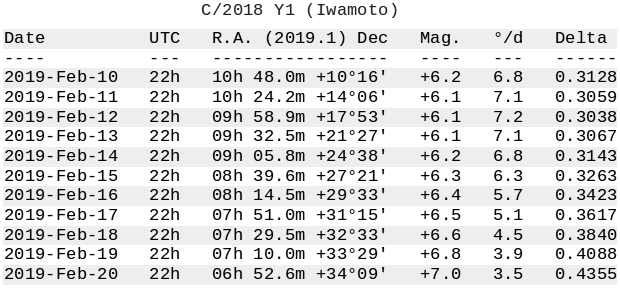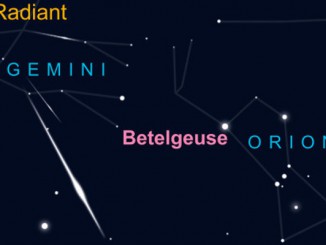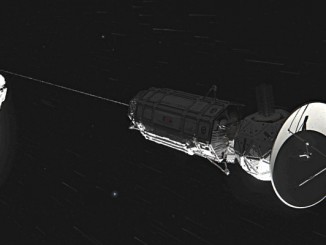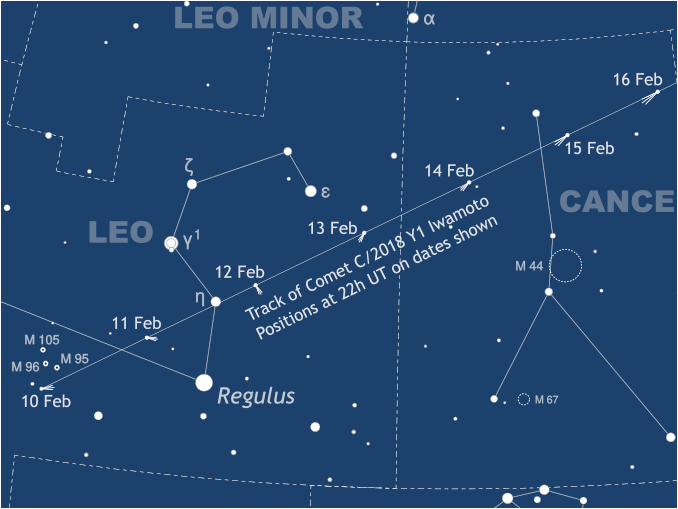
Before the light from a waxing Moon becomes too obtrusive (full Moon occurs on 19 February), take full advantage of any clear nights to catch a glimpse of swift Comet C/2018 Y1 Iwamoto as it gallops through the constellations of Leo, Cancer and Gemini over the next ten nights. Click here to download a high-resolution PDF finder chart suitable for printing.
Discovered by Japanese astronomer Masayuki Iwamoto in images captured on 18 December 2018, C/2018 Y1 orbits the Sun every 148.7 years in a highly eccentric path inclined to the ecliptic by an angle of 160 degrees. Comet Iwamoto came within 1.3 astronomical units (AU) of the Sun at perihelion on 6 February, but will plumb the depths of the solar system out beyond 245 AU at aphelion.
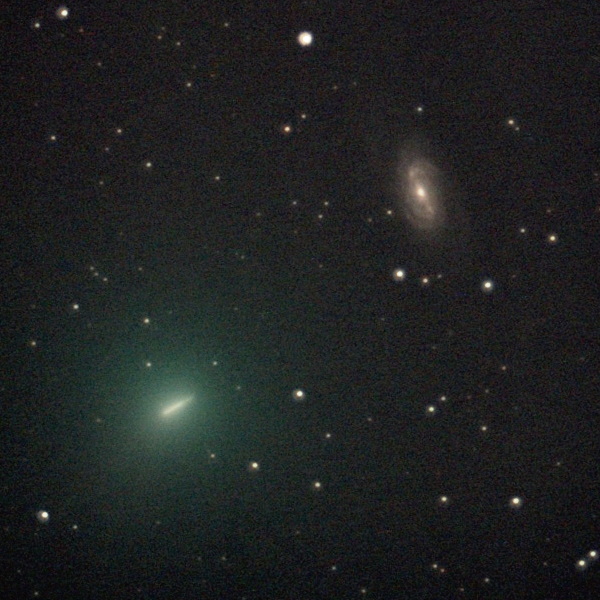
Predictions indicate that Comet Iwamoto might attain an integrated magnitude of +6 around closest approach, but don’t miss any viewing opportunities owing to the waxing Moon’s glare. Latest reports indicate that C/2018 Y1 has a coma approximately one-third of a degree across with a short tail.
A close encounter with NGC 2903
C/2018 Y1 passes just 3½ arcminutes to the southwest of magnitude +9 barred spiral galaxy NGC 2903 in Leo about 21:30 UT (9:30pm GMT) on 13 February. In fact, depending on the comet’s coma size and opacity, could the galaxy be obscured? Discovered by Sir William Herschel who catalogued it in 1784, NGC 2903 is visible in large binoculars or small telescopes and lies about 30 million light-years from Earth. This galaxy displays exquisite spiral arms, so astrophotographers are advised to prepare for a great shot – weather permitting.
Watch C/2018 Y1 online
Comet Iwamoto’s close approach to NGC 2903 will be streamed by the Virtual Telescope Project. Follow this link to watch the conjunction live. This free online session is scheduled to start at 21:00 UT (9pm GMT) on 13 February.
